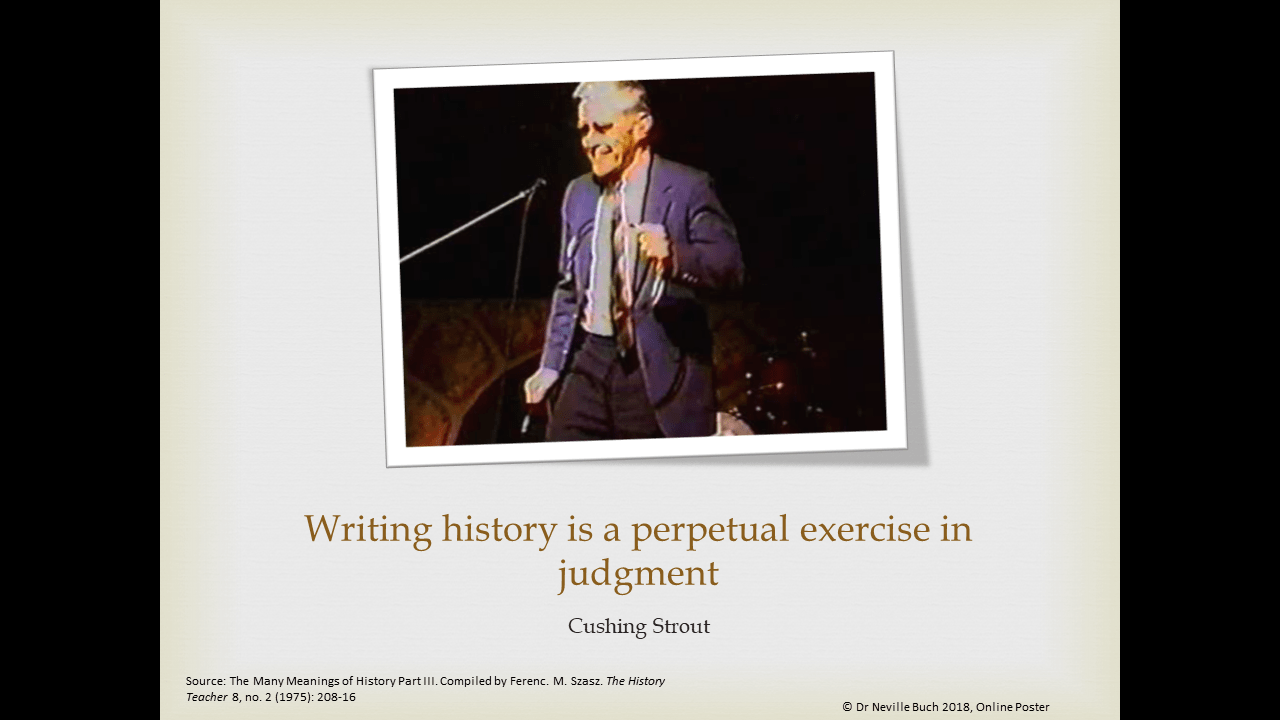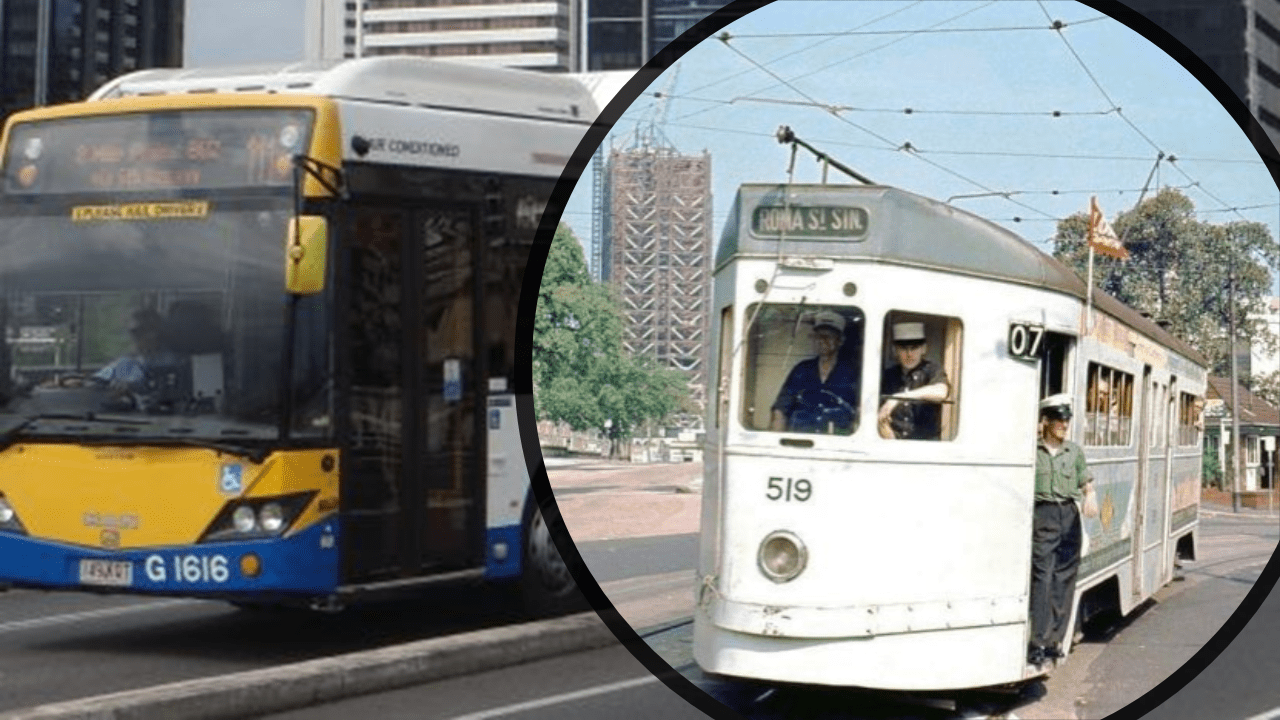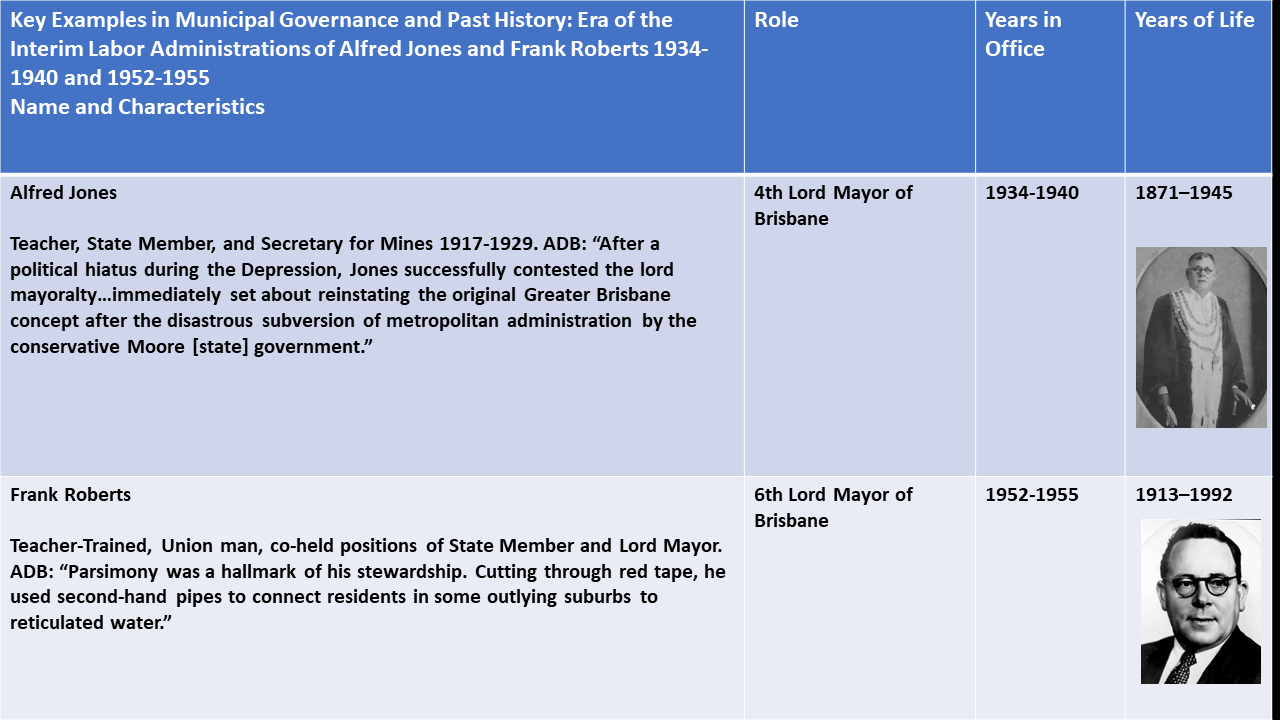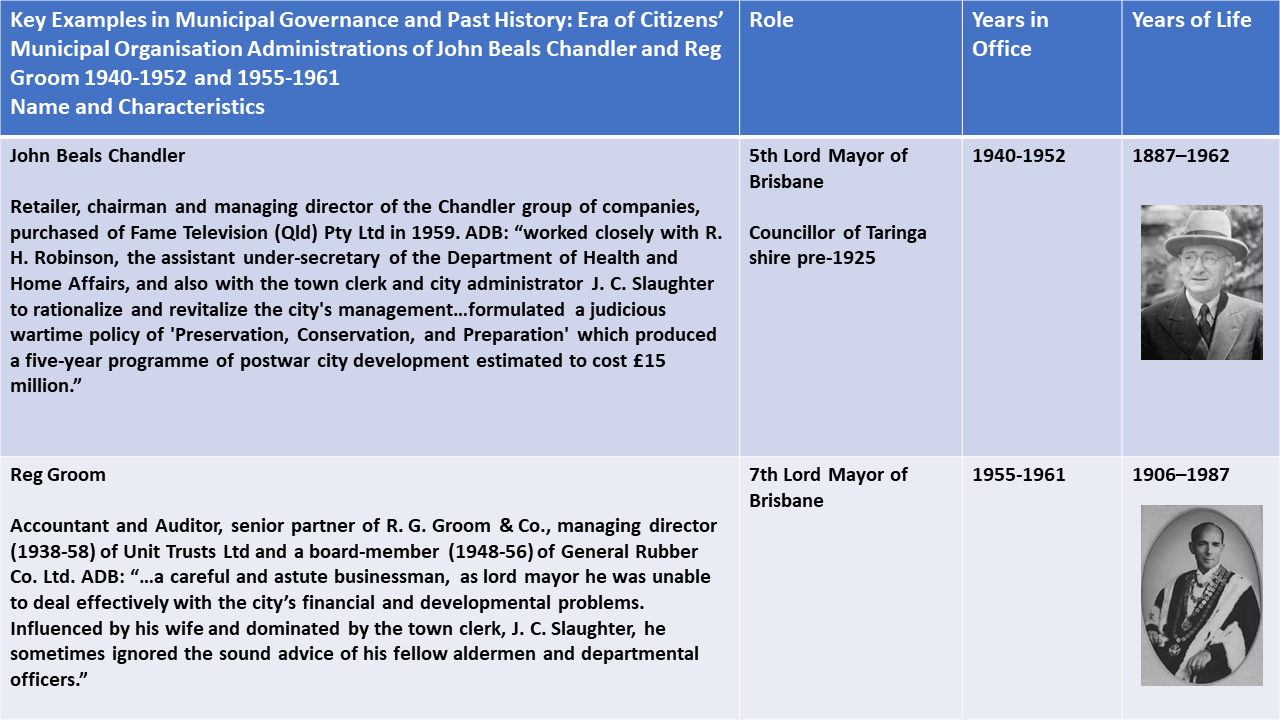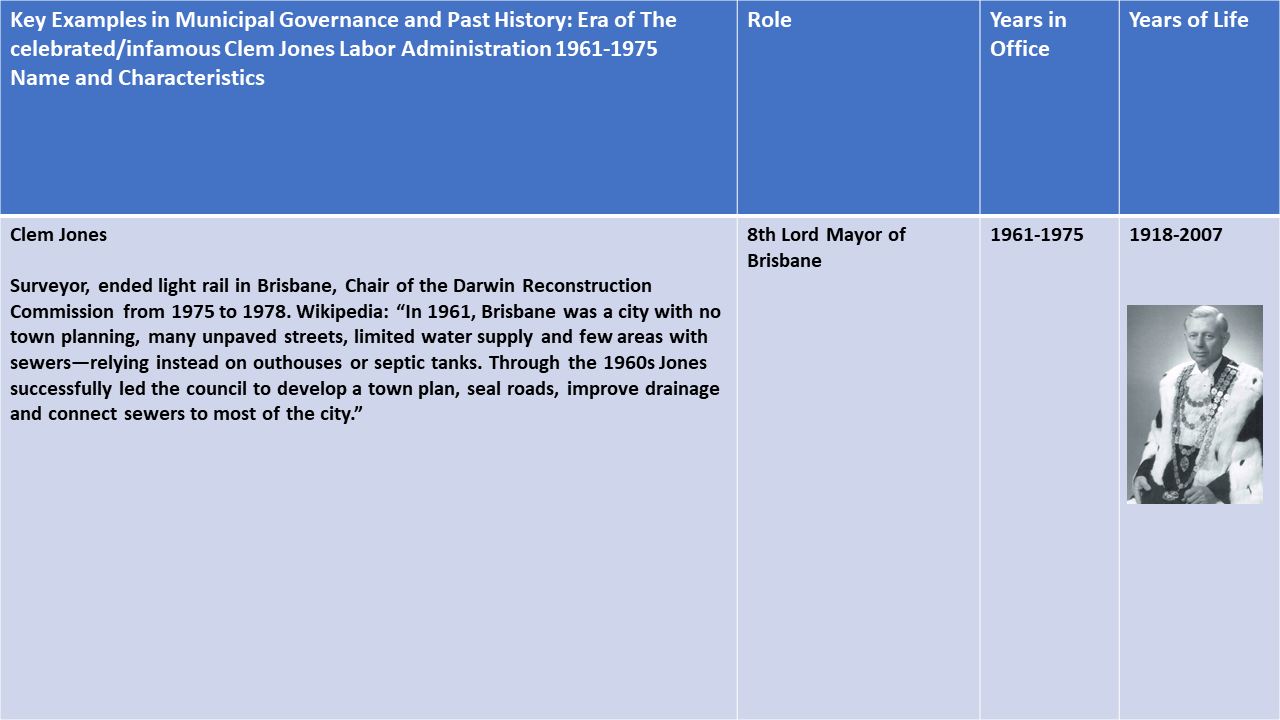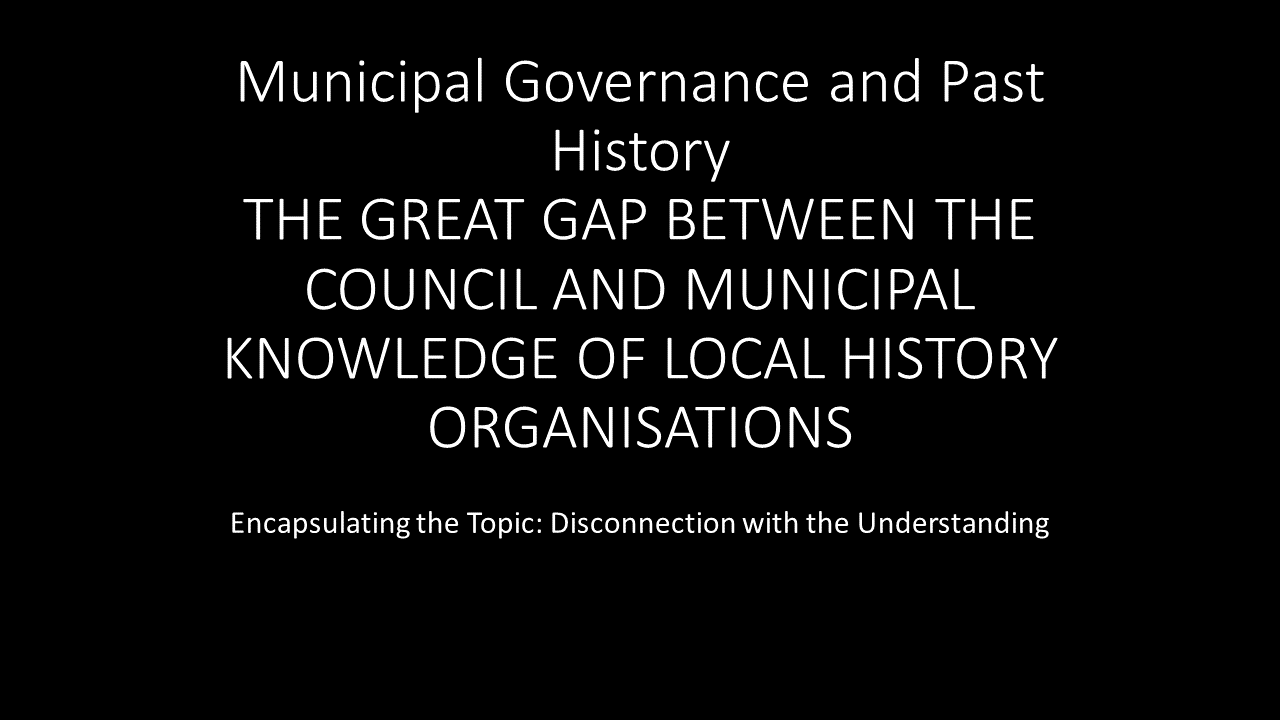The following is a 1777 word presentation to fit the 20 minutes at the 2023 Australian Historical Association conference in Melbourne. Those who are interested or concerned about municipal governance and understanding the local studies are invited to provide feedback, comments, criticisms, questions, and other thoughts.
New Version PDF Re-Write here.
Old Version PDF Copy here.
- Greeting
“I would like to begin by acknowledging the traditional owners of the land on which we are meeting today, the Wurundjeri people of the Kulin Nation, and pay my respects to their Elders past, present and emerging.”
- Introduction
Recently, in an online group called, The Foundations of Logic, a colleague quoted “Awareness of Ignorance is The Beginning of Wisdom,” from Socrates. I commented that I was more or less in the Socratic tradition, but for my own workings out, I believe the awareness must come from scoping out in thought beyond the established bubble thinking. My AHA paper today is the history of municipal governance in Brisbane and the thinking which structures the council planning, asking the question how does that connect the idea to local history and commemoration.
- Historiography (1)
Cushing Strout stated, “Writing history is a perpetual exercise in judgement.” Added to that thought is…
- Historiography (2)
Bernard Williams’ judgement, that, “History is central to my argument not just because history is central to the humanistic discipline, but because, I am going to argue, philosophy has some very special relations to it.”
- Bad Historically thinking in Council and Community
Unfortunately, this is not how Council members, past and present, and the members of the communities, past and present, have thought through their own local histories. A usual perspective on Brisbane History is the mode of transportation. A common old view of Brisbane history relates the former tramway system. The modern view of Brisbane is the busway system with the promise the new Metro system.
- States of Affairs
It seems as if the Council and the public do not understand the idea of philosophical states of affair as the histories. It is really straightforward but persons uneducated keep tripping up in the thinking. A state of affair is a situation or set of circumstances. In other words, it is the contextual analysis of historiography.
- The Literature
The mountain of primary and secondary source literature of Brisbane history demonstrated the disconnection with the understanding.
- Council Records
Pugh’s Almanac 1904 reveals a pre-1925 Brisbane Municipal Council culturally in touch with the local communities with the municipal balls, the erection of public baths, and interacts with the Brisbane School of Arts and the Brisbane Musical Union. However, searching through the Brisbane City Archives Records reveals a thinning out, over time, of the Council’s concerns with the cultural life of the city.
- What is Semantically Missing?
Examining the Council minutes, from 1925 to 1937, there are no references to concepts of the urban, community, nor educational interests, except for rate and tariff exemptions or reductions for educational institutions and applications to show educational films in council-owned halls. Hence, the Council was able to have control over educational processes without making contributions to municipal education.
- The Tone of the Brisbane City Council
There were, however, private interests with tendered and non-tendered companies in Brisbane, such as the Suburban Property Investment Ltd. There were concerns of the rates for “suburban Neon sign lighting.” The closest that the Council got to understanding the intellectual issues of the suburbs was the support given to the Brisbane and Suburban Night Tennis Association. The year 1937 appears to be the first reference to community concerts in the Council minutes, even as such regular activities happened – and it is only the records are very quiet. Often, they happened without Council support, but from around 1937 community requests were made noticeable in the records. The completion of the Brisbane City Hall in 1930 might have had something to do with better Council support.
- Disconnection with Understanding the Outside World
Any significant mentions of “the past” in the Council minutes pertain to such egotistical matters as the photographs of ‘Past Council’ or the accounting of past employees. Ideas of future policy were limited to gardens, land usage, roadside, gas service, water supply and funding. Thinking on ‘Commemoration’, ‘Research’, or ‘the World’ was completely absent. We find in the Council minutes communications with other Australian municipal entities, such as the Metropolitan Local Government Association in Perth, and in that sense “the world” did exist to some small measure.
- The Business of Business is Business and Nothing Else
The minutes were overwhelmed with the concept of ‘business’, as if the twentieth century American obsession with ‘business’ was the only way to think about municipal affairs. In 1933 Alderman Tait gave an account of his expenses “while on Council Business in America”, but there are very little records of what that business was.
- Social-Political Agendas
Local Authorities Association of Queensland was active in the interchange with the Council from 1925. Delegates were appointed from the Council to attend the Association. Competing with those agendas of the association was the Local Government Clerks’ Association (later, Municipal Officers’ Association) and the Local Producers’ Association. The policy of preference for locally manufactured articles for municipal use was there from 1925.
- Era of Brisbane Municipal Council (1859-1903)
Looking closely at the history of the Brisbane Councils, we find a power shifting between a few representatives who were knowledgeable for municipal governance and many who were not.
Robert Cribb was a radical liberal, a member of the Anti-Corn Law League and associated with the work of Cobden and Bright before arriving in Brisbane.
George Edmondstone, however, was a naïve Liberal, if we are take seriously the words that he: “seldom spoke in the assembly and made little impression.”
William Stephens was caught in the social liberalism and pioneer historiography.
- Era of Pre-Greater Brisbane Plan 1924
Digby Denham was the architype of the narrow-thinking Brisbane businessman.
Frederick Arthur Stimpson was a populist representative in rural communities of the outer townships.
- Era of Nationalist and Progressivist Administrations of William Jolly and John Greene 1925-1934
G.A. Bayard was the archetype of the city’s retail interests.
John Soden was the son of the “Pioneer” John Soden, of the Brisbane Omnibus fame.
Robert Ellersleigh Nixon-Smith was central figure in the Nationalist and Progress party movements.
- Era of the Interim Labor Administrations of Alfred Jones and Frank Roberts 1934- 1940 and 1952-1955
Alfred Jones reinstated the original Greater Brisbane concept after the disastrous subversion of metropolitan administration by the conservative Moore state government.
Frank Roberts was parsimonious but a great recycler for infrastructure.
- Era of Citizens’ Municipal Organisation Administrations of John Beals Chandler and Reg Groom 1940-1952 and 1955-1961
John Chandler was the Council’s first modern PR management guru, with the slogan, ‘Preservation, Conservation, and Preparation.’
Reg Groom was famously rigorous as ‘The Lord Mayor Accountant’ but ignored advice and thus intelligence.
- Era of The celebrated/infamous Clem Jones Labor Administration 1961-1975
The Surveyor Clem Jones was either celebrated or infamous. He fixed the forlorn sewer program problem, but ended light rail in Brisbane, only for the state and municipal authority today spending billions returning light rail. Oh God, the idiocy! Which is bubble thinking.
- Decade of Change in the Labor Administration of Bryan Walsh, Frank Sleeman, Roy Harvey 1975-1985
Bryan Walsh is one of a few hidden figures in the history.
Frank Sleeman is famed for the 1982 Commonwealth Games.
But the honour of hosting the event was Roy Harvey and Lady Mayoress Pearl.
- The Age of the Americanised Flair in The Sallyanne Atkinson Liberal Administration
Sallyanne Atkinson was one of the most intelligent Lord Mayors and the first and only female Lord Mayor of Brisbane. A history graduate, Sallyanne was a close friend to several members of the Department of History at UQ during her tenure.
- The Age of the Communitarian Compassion in the Labor Administrations of Jim Soorley and Tim Quinn 1991-2003 and 2003-2004
As an intellectual, Jim Soorley made “a shift from Brisbane Council being only concerned with ‘rates, roads, rubbish’ to taking on issues such as drug use, homelessness, domestic violence and social justice.”
Tim Quinn followed Soorley’s direction with Urban Renewal being an important intellectual theme.
- The Age of the Bewildering LNP Administration of Campbell Newman, Graham Quick, Adrian Schrinner 2004-2023
The current long LNP administrations of Campbell Newman, Graham Quick, and Adrian Schrinner has lost the plot. That is not a partisan statement, I do not believe that a counter-Labor administration would have been much different.
- The Literature Again
The change of direction of current long administration is for large transportation infrastructure. One-third of the council’s total budget expenditure is for the implementation of TransApex, the road network and traffic management, with a package of bridge, traffic and tunnel projects. In recent years that has meant the $1.5 billion Legacy Way Tunnel, open level crossing eliminations at Bald Hills and Geebung, but not at Coopers Plains and Runcorn, and the reconstruction of the New Farm Riverwalk after the 2011 Queensland floods. The last project points to the significance of the Council to think intellectually in the very long past administrations, as Margaret Cook has well demonstrated in her work. The late John Laverty also contributed to the intellectual critique of the Brisbane City Council.
- The Great Gap
There is a great gap between the Council’s, with the general public’s understanding of local history, and against the municipal knowledge of local history organisations.
- The Local History organisations
The local history organisations in Brisbane are not merely the Brisbane History Group Inc., nor the sole providence of the Royal Historical Society of Queensland, even though the bubble thinking conservative would like it to be the case. The landscape is made up of the Brisbane Southside History Network with 16 groups south of the river, and 17 groups on the unnetworked northside.
- Methodology and Understanding
The only way to bring the connection with understanding Brisbane history is through the local history organisation, but with a specific geographic and conceptual methodology.
- Brisbane City Councils and boundaries
The year 1925, with elections in March, and from the 1924 Greater Brisbane Plan, produced what was the largest city in area size in the Southern Hemisphere. Today, it is largest City Council in Australia by population and area, with the jurisdiction which includes 26 wards and 27 elected councillors covering 1,338 km2 (517 sq mi).
- Mapping Brisbane History Project
Since 2012 the Mapping Brisbane History Project has been making the connection with understanding Brisbane history. It has established a pattern of regional groupings which has been much more effective in understanding than the many changes in ward boundaries and the production of new wards.
- Conceptual Mapping
Unfortunately, what is difficult to understand – since our primary, secondary, and universities schools have stopped teaching intelligently, pathways into geography and local history – are the different conceptual mapping involved.
- Understanding Persons and Worldview
The Council’s public relations machine treats persons in the machine thinking. But person’s thinking is not made for singular messaging. A person’s thinking is layered in full or partial schemas for viewing the world.
- Metatheory
Furthermore, above the descriptive worldviews, scholars in local history, local sociology, and local philosophy, work in the space of the metatheory. The work shows why the Council’s descriptions fails intelligently.
- To Conclude
To conclude in an argument for Council-supported Community Education.
- The Plan
The purpose of such a community education program is to properly educate in local studies.
The plan starts with the concept of a cultural dialogue for deep understanding on the landscape of Brisbane, which would include a sociological exchange between intellectual history and Aboriginal and Torres Strait Islander cultures.
- Community Education Today
A method would be multi-cultural workshops on Brisbane histories and including first nations persons.
The aim, and hopefully the outcome, is that the Council and the Brisbane public will have clear ideas and their fit as schemas (intelligently) on the local histories for ‘all of us’ including the current indigenous movement for The Voice.
- In the meantime, the Council.
In the meantime, the Council. And the Lord Mayor has no plans.
- Deepen Understanding
Thank you.
Neville Buch
Latest posts by Neville Buch (see all)
- Dear grossly, ethically, corrupted - December 21, 2024
- Thoughts with a Professional History colleague on “Artificial Intelligence” - December 21, 2024
- Stephanie M. Lee on “AI by omission”, The Chronicle of Higher Education, Thursday, December 19, 2024 - December 20, 2024



